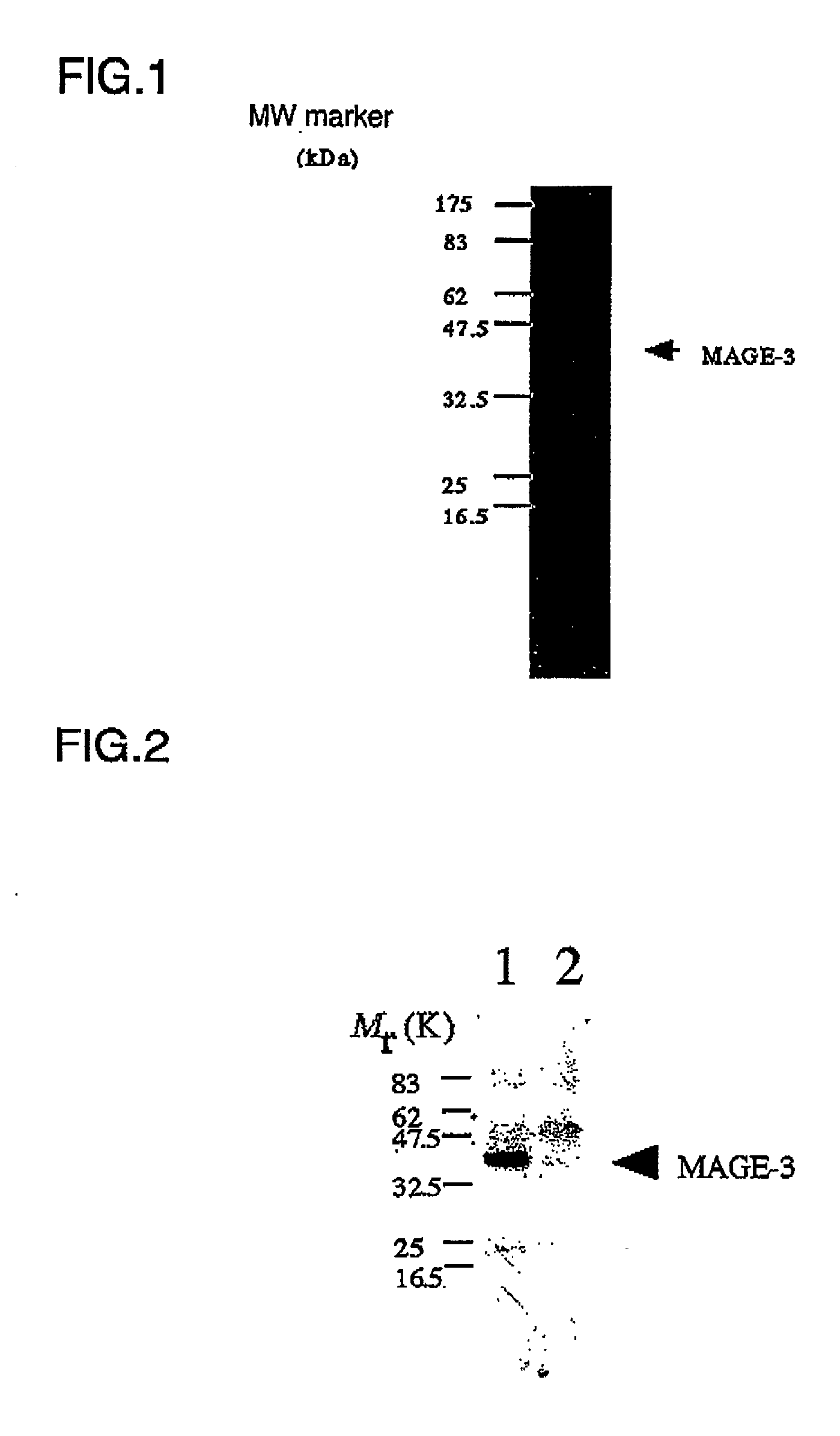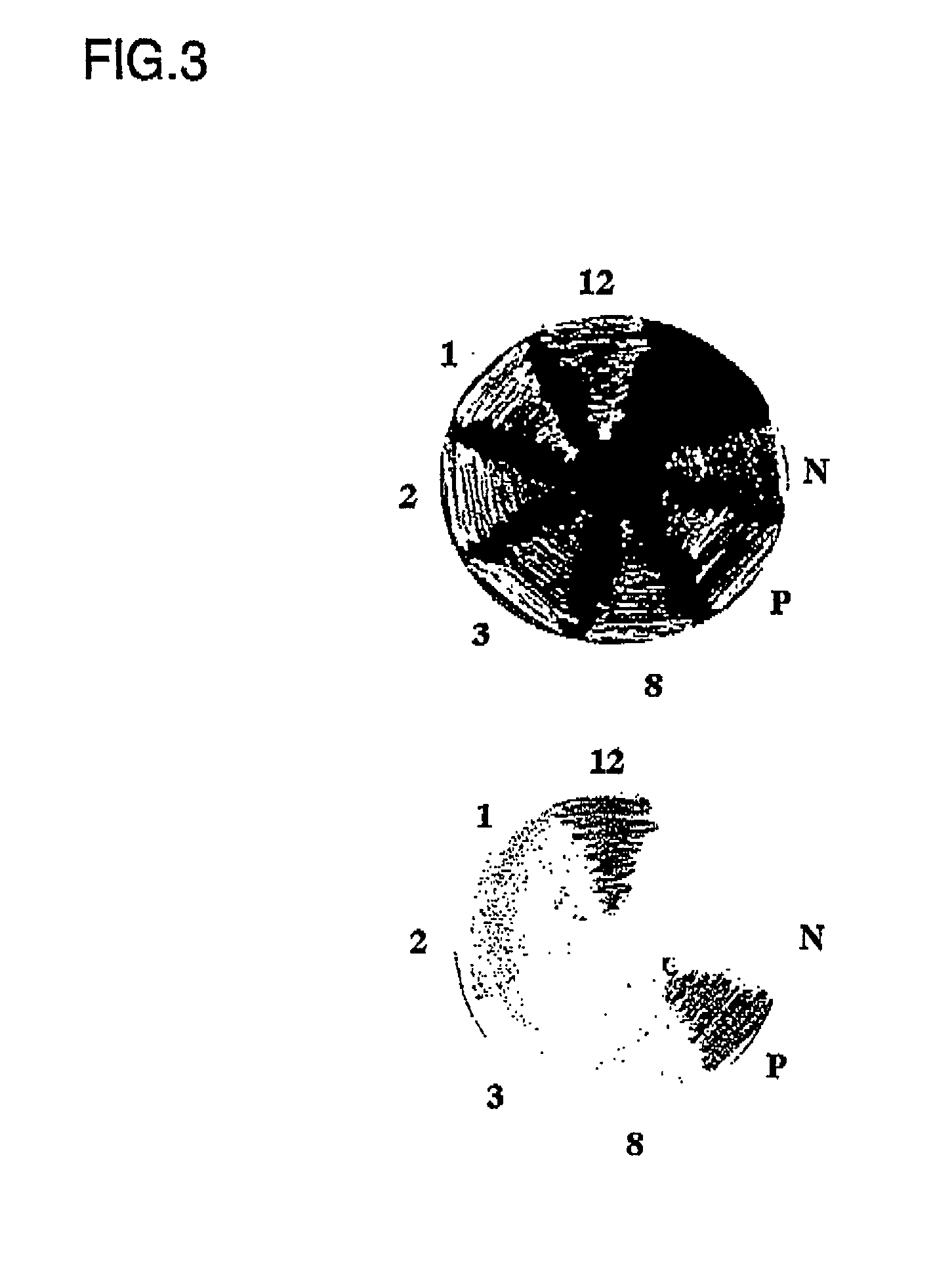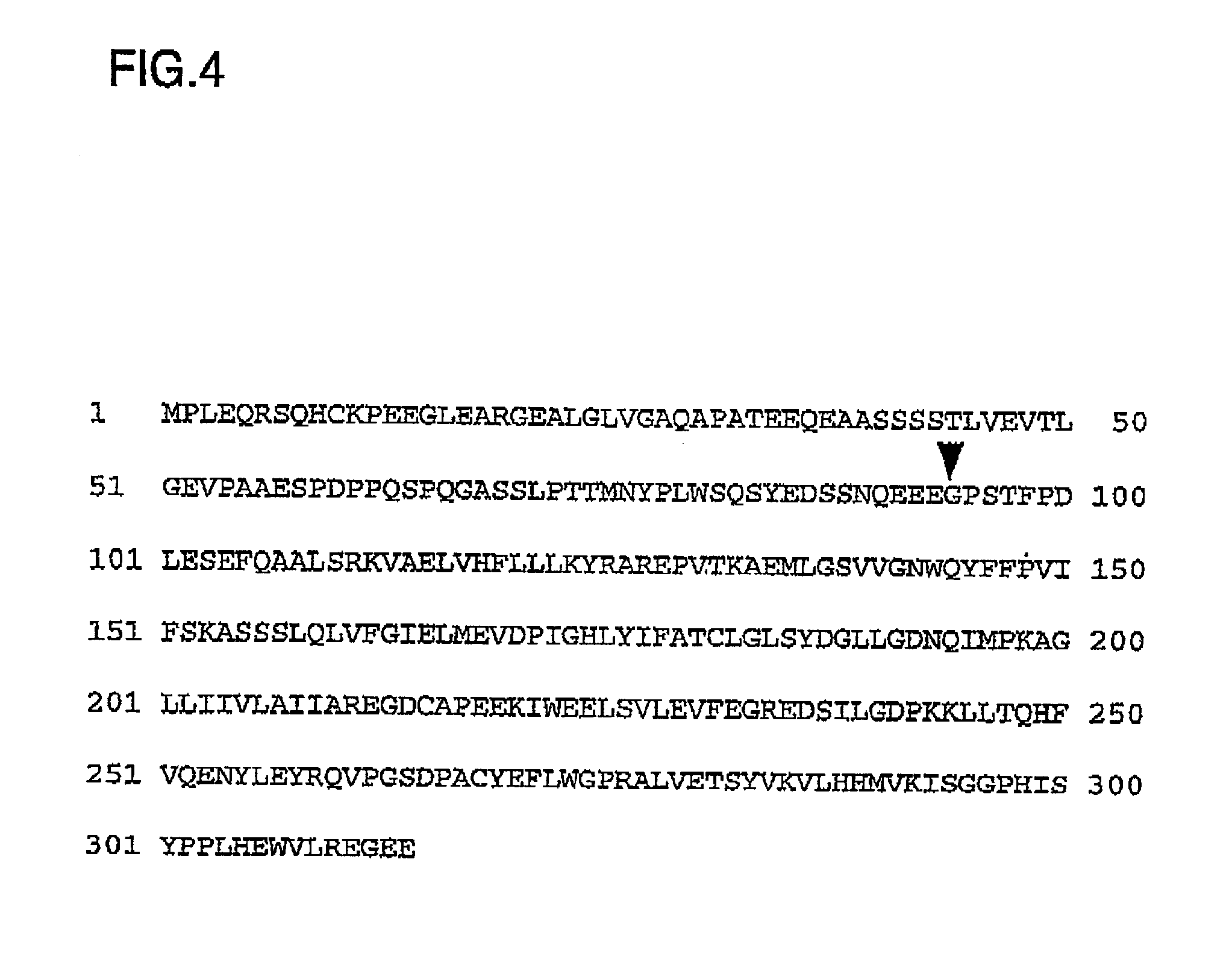Cell death inhibitory protein
- Summary
- Abstract
- Description
- Claims
- Application Information
AI Technical Summary
Benefits of technology
Problems solved by technology
Method used
Image
Examples
example 1
Cloning of MA GE-3
[0102] A PCR (polyrmerase chain reaction) was performed using a human testis cDNA library (Clontech, U.S.A.) as a template to thereby obtain the coding region of MAGE-3 protein for use in a large scale expression experiment. An outline of the procedures is as described below. Not only in this Example but also in the subsequent Examples, general procedures for handling DNA and RNA were in accordance with the methods described by Sambrook et al. (Sambrook, J., Fritsch, E. F., & Maniatis, T., Molecular Cloning: A Laboratory Manual, 2nd Ed., Cold Spring Harbor Laboratory Press, Cold Spring Harbor, N.Y., USA (1989)).
[0103] Although high expression of MAGE-3 is observed in many cancer cells including melanoma cells, the expression of MAGE-3 in normal cells is limited to the testis (Van Pet, A. et al., Inmunol. Rev. 145,229-250 (1995)). The primers used in the PCR (i.e., NTOP77, NBOT68, NTOP79 and NBOT65) had the sequences as described below. In order to facilitate the su...
example 2
Large Scale Production of MAGE-3
[0106] MAGE-3 was produced in a large scale using E. coli.
[0107] First, the MAGE-3 cloned in pNB178 was amplified by PCR. A sequence which can be cut by restriction enzyme NheI was added to the 5' primer, and a sequence which can be cut by restriction enzyme XhoI was added to the 3' primer. The reaction was performed 25 cycles, one cycle consisting of denaturing (at 94.degree. C. for 1 min), primer annealing (at 51.degree. C. for 1 min) and DNA extension (at 72.degree. C. for 2 min).
[0108] The amplified DNA fragment was purified in the same manner as described in Example 1, and then inserted between the NheI and XhoI sites of an E. coli expression plasmid vector pRSET-A (Invitrogen, U,S.A.) to thereby obtain plasnid pNB202. The use of this pREST-A vector adds a tag sequence containing His-His-His-His-His-His (Met-Arg-Gly-Ser-His-His-His--His-His-His-Gly-Met-Ala-Ser: SEQ ID NO: 9) to the 5' end of the cloned gene. This enables affinity purification of ...
example 3
Binding Experiment between MAGE-3 and Proaspase-12
[0111] Pro-caspase-12 and MAGE-3 protein were over-expressed in COS-1 cells. Then, the binding of them in an extract from the COS-1 cells was examined by the immunoprecipitation technique.
[0112] An anti-MAGE-3 antibody to be used in the detection of immunoprecipitate was prepared by immunizing rabbits. Briefly, a peptide representing a C-terminal sequence of MAGE-3 (CHISYPPLHEWVLREGEE; SEQ ID NO: 10; Tana Laboratories, U.S.A.) was linked to a carrier protein (activated hemocyanin; Pierce, U.S.A.) and injected into rabbits together with an adjuvant. The "C" at the amino terminus of the above peptide was added artificially so that the peptide binds to the carrier protein and an affinity resin to be used. On the other hand, a peptide of the same sequence as described above was coupled to activated FMP-Cellulofine resin (Seikagaku Corp., Japan) to prepare a peptide column, which was used in the subsequent affinity purification. The anti-...
PUM
| Property | Measurement | Unit |
|---|---|---|
| Digital information | aaaaa | aaaaa |
| Cell death | aaaaa | aaaaa |
Abstract
Description
Claims
Application Information
 Login to View More
Login to View More - R&D
- Intellectual Property
- Life Sciences
- Materials
- Tech Scout
- Unparalleled Data Quality
- Higher Quality Content
- 60% Fewer Hallucinations
Browse by: Latest US Patents, China's latest patents, Technical Efficacy Thesaurus, Application Domain, Technology Topic, Popular Technical Reports.
© 2025 PatSnap. All rights reserved.Legal|Privacy policy|Modern Slavery Act Transparency Statement|Sitemap|About US| Contact US: help@patsnap.com



